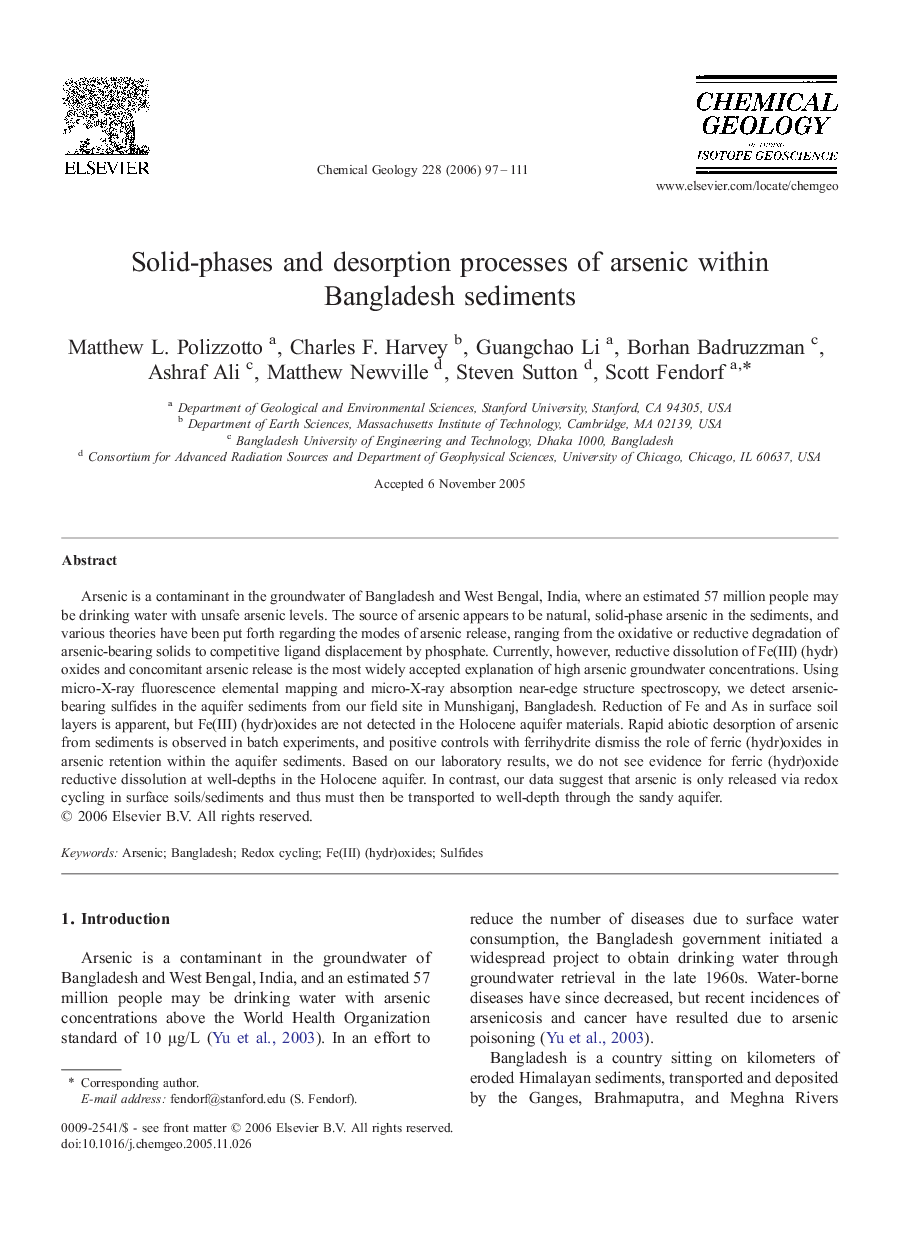| Article ID | Journal | Published Year | Pages | File Type |
|---|---|---|---|---|
| 4701354 | Chemical Geology | 2006 | 15 Pages |
Arsenic is a contaminant in the groundwater of Bangladesh and West Bengal, India, where an estimated 57 million people may be drinking water with unsafe arsenic levels. The source of arsenic appears to be natural, solid-phase arsenic in the sediments, and various theories have been put forth regarding the modes of arsenic release, ranging from the oxidative or reductive degradation of arsenic-bearing solids to competitive ligand displacement by phosphate. Currently, however, reductive dissolution of Fe(III) (hydr)oxides and concomitant arsenic release is the most widely accepted explanation of high arsenic groundwater concentrations. Using micro-X-ray fluorescence elemental mapping and micro-X-ray absorption near-edge structure spectroscopy, we detect arsenic-bearing sulfides in the aquifer sediments from our field site in Munshiganj, Bangladesh. Reduction of Fe and As in surface soil layers is apparent, but Fe(III) (hydr)oxides are not detected in the Holocene aquifer materials. Rapid abiotic desorption of arsenic from sediments is observed in batch experiments, and positive controls with ferrihydrite dismiss the role of ferric (hydr)oxides in arsenic retention within the aquifer sediments. Based on our laboratory results, we do not see evidence for ferric (hydr)oxide reductive dissolution at well-depths in the Holocene aquifer. In contrast, our data suggest that arsenic is only released via redox cycling in surface soils/sediments and thus must then be transported to well-depth through the sandy aquifer.
